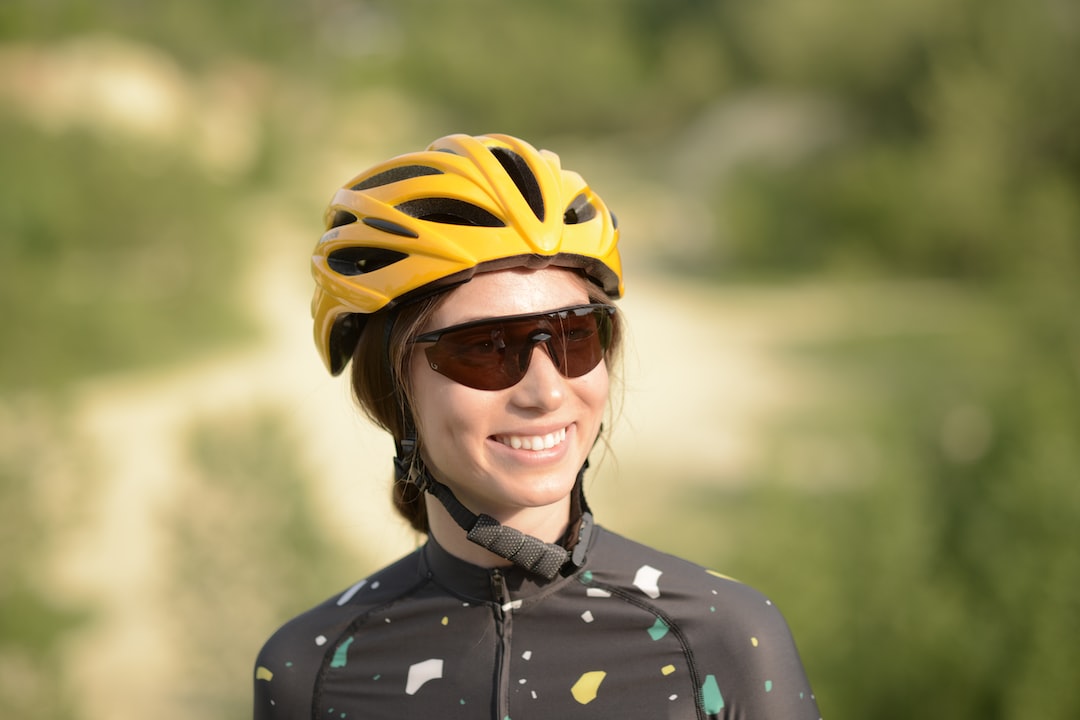Photochromic or transition lenses are an excellent choice for cyclists because they adjust to changing light conditions. They darken when exposed to sunlight and become clear again when you move indoors.
Avid cyclists look for eyewear that covers a large area of the face, offers protection, and is tough against grit, dust, and rain. If this is you, consider a pair of photochromic cycling glasses.
They darken in the sun
Also known as transition lenses, photochromic glasses darken in sunlight and clear up when not exposed to UV rays. This makes them ideal for cycling, especially mountain biking, where you might ride in and out of shadowy wooded areas back into the bright sun. In addition, these lenses are very effective at blocking UV rays from the sky and helping to prevent glare on light-colored pavement or water.
You can find these lenses in all types of bike frames, and some even come treated with a polarized lens coating to reduce glare from the sun’s reflected light off flat surfaces such as sidewalks or roads. This can be particularly dangerous for cyclists, making it harder to see lane changes and other hazards in your path.
Some cycling sunglasses have adjustable arms and nose pads to customize the fit, and many also have interchangeable rubber parts that help keep the glasses securely in place as you ride. However, finding a pair that will remain comfortable even as you sweat is essential.
They get lighter in the rain
Photochromic cycling glasses are the right choice if you’re looking for cycling sunglasses that will darken when you enter the sunlight and return to clearness as you go indoors. They will keep glare, dust, debris, and the sun’s harmful UV rays away from your eyes.
Most cycling glasses come with either a set of interchangeable polarized and non-polarized lenses or one Photochromic lens that automatically adjusts to changing lighting conditions. Both types of lenses protect against UVA and UVB radiation. Some also have a mirrored coating that reduces reflections on smooth surfaces. Polarized lenses are more suitable for bright, sunny days and high mountains. Photochromic lenses change tint based on light conditions and are more versatile and ideal for unpredictable weather.
Avid cyclists look for many things in their eyewear, including comfort, durability, and style. Photochromic lenses make these glasses ideal for cyclists, as they eliminate the need to juggle two pairs of eyewear for different activities.
They get darker in the cold
For those who love cycling sunglasses, photochromic lenses are a great option. They are clear or almost clear indoors but darken when exposed to sunlight, eliminating the need to switch to a different pair of glasses before cycling. Plus, they offer protection from harmful UV rays.
While some people think that photochromic lenses are expensive, they can save money in the long run. By reducing the need for a second pair of glasses, you can save on transportation costs and reduce your risk of damage to your expensive eyewear. Photochromic lenses can also be polarized, which will help reduce the glare from road or water, which can be dangerous for cyclists.
In addition to photochromic lenses, many high-quality cycling glasses offer a contrast-enhancing feature that improves visibility in low-light conditions. This enhances the contrast between specific colors and improves visibility while riding, which can be especially helpful for mountain biking or trail running.
Photochromic lenses are also helpful for sports like kayaking or hiking, where the lighting conditions can constantly change. They’re also an excellent option for mountain bikers who need to see the trail ahead of them as they descend a steep hill.
They get clearer in the heat
If you’re cycling in intense sunlight, you’ll want to wear sunglasses that are as clear as possible. Photochromic lenses are ideal, as they automatically adjust to the day’s light conditions.
If your eyes are light-sensitive, you can also choose a pair of glasses with polarized lenses. These lenses filter out extreme reflections of smooth surfaces like roads, water, and snow. They also reduce glare and eye fatigue caused by digital device screens and fluorescent lighting.
A good pair of cycling glasses will cover most of your face to protect against sun, dirt, and other debris. They should also be comfortable and durable. It would be best to look for cycling glasses that meet ANSI Z87.1 standards and offer excellent impact resistance.
Protecting your eyes is essential whether taking a casual ride through forested areas or racing in a hot race. The best cycling glasses offer clear vision in various lighting conditions and climates. They can also help you avoid accidents and injuries.
You can check out the full range of cycling frames and lens options for a great selection of cycling glasses. You’ll find frames suitable for any bike and a wide selection of lenses and coatings to suit your needs.







0